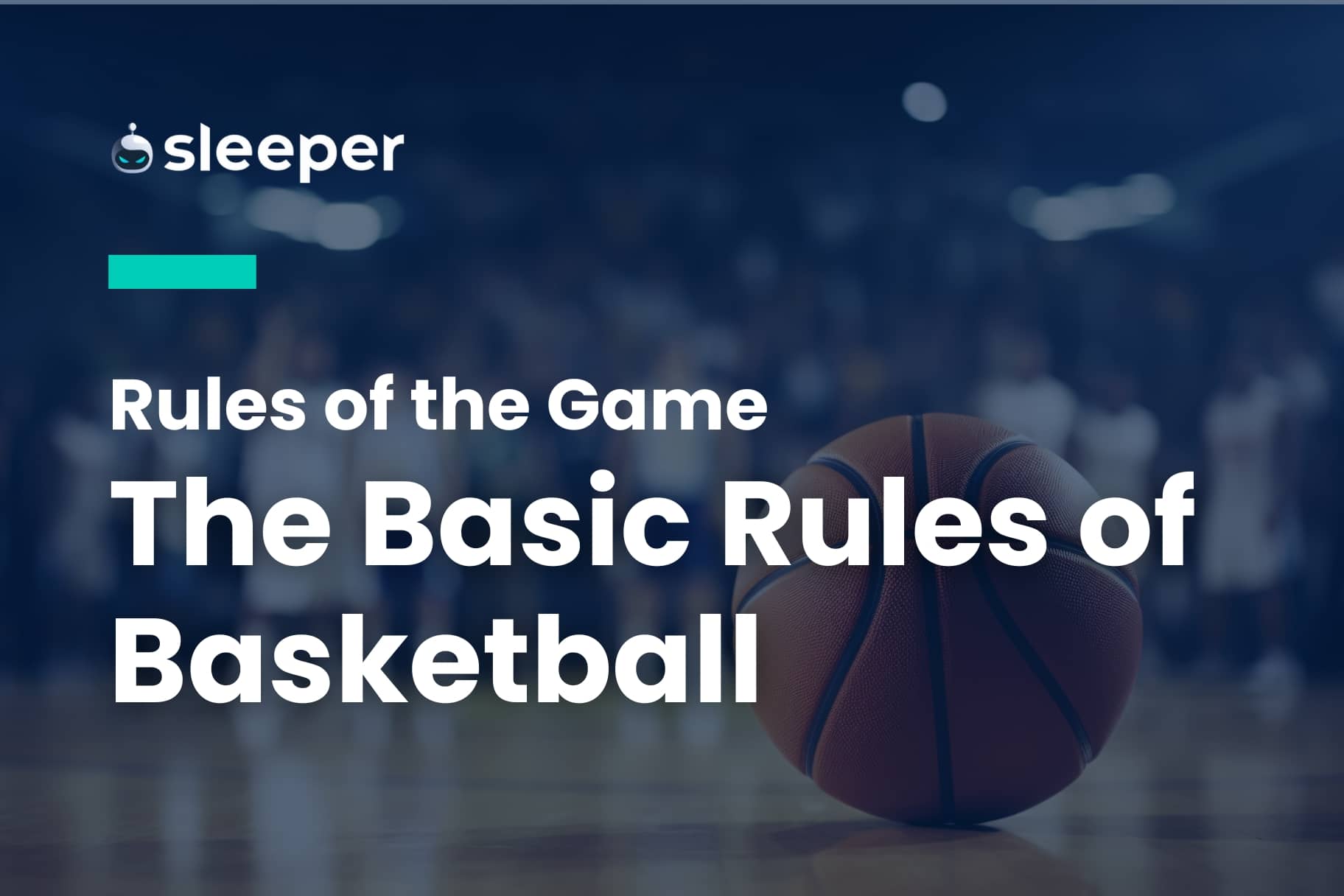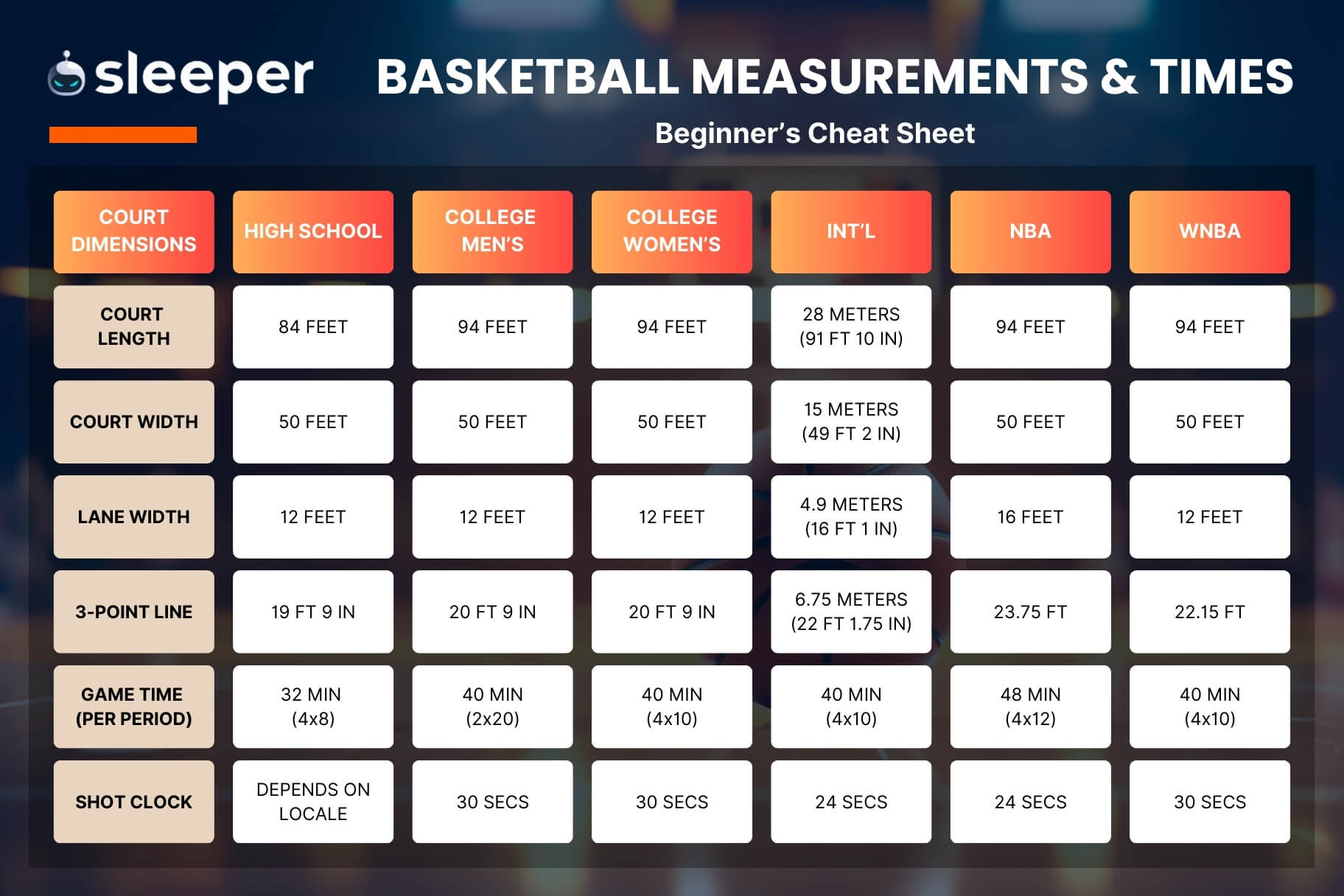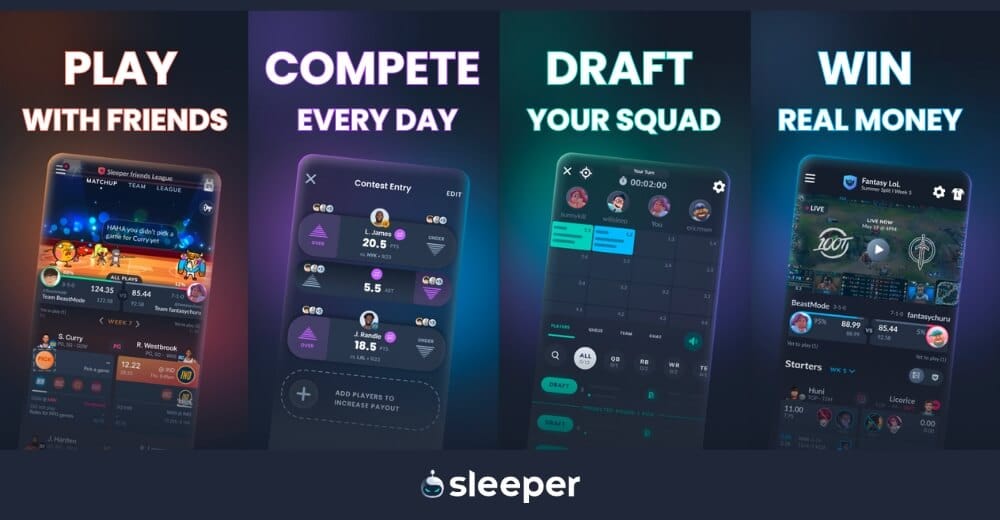If you’re new to watching or playing basketball, or a fantasy enthusiast looking to brush up your fundamentals, knowing the basic rules is critical.

Soccer (or, fútbol) has a tight grip on the title of “world’s most popular sport,” but basketball is a strong No. 2 on the list. It’s massive in the United States, it’s huge in Europe and it’s quickly gaining steam everywhere else.
Whether you’re newly fascinated with this global phenomenon or just looking to at least somewhat understand the game that so many are obsessed with, you might be wondering: What exactly are the rules here?
You probably know that the general goal is to put the ball in the basket more times than the other team. But how much is each basket worth?
Why are there multiple clocks?
And what’s with all the whistles?
Take a deep breath and let us walk you through the basics.
Basketball Rules Explained
The Measurements
Two distances are the same at every level of organized basketball: The rim is 10 feet above the ground and the free-throw line is 15 feet away from the front of the backboard (the glass rectangle the basket is attached to).
Beyond that, however, many of the dimensions depend upon the level and gender of the league.
The size and weight of the ball, the width of the lane (painted rectangle on the floor from the free-throw line to the baseline), the three-point arc and the length of the court itself vary from high school to college to the National Basketball Association (NBA) to international basketball. There are also differences between the men’s game and the women’s game.
Generally speaking, though, the ball weighs a bit more than a pound, the court is typically 50 feet wide x 94 feet long and the three-point line is 19 to 24 feet from the hoop.
The Clock(s)
Like the dimensions, the specifics here vary based on which version of basketball we’re talking about.
The NBA has four 12-minute quarters and a 24-second shot clock. The International Basketball Federation (FIBA) has the same shot clock, but four 10-minute quarters. Men’s college basketball uses two 20-minute halves and a 30-second shot clock.
Regardless, when the game clock runs out in the final quarter or second half, the game is over — unless the score is tied, in which case there is a five-minute overtime period.
The shot clock keeps the game moving, forcing teams to shoot more frequently. If the shot clock runs, the ball gets awarded to the opposing team.

Scoring System
Shots (or field goal attempts) originating from beyond the 3-point line are worth three points. Shots from on or inside the 3-point arc are worth two. Free throws — when everyone is just kind of standing around watching one player take their time on a 15-foot shot — are worth one point apiece.
Note: The shooter’s feet must be fully behind the 3-point line for it to count as three points. If even a tiny bit of one toe is on the line, it’s just a long two-pointer. However, it only matters where the shooter leaps from, not where they land. As long as they take off from behind the arc, they could land on the free-throw line and it’s still a 3-pointer.
See also: Fantasy Basketball Scoring: How It Works
Traveling, Carrying and Double Dribbling
The basketball moves in three main ways: shooting, passing and dribbling (bouncing the ball).
To move around the court while in possession of the ball, the player must be continuously dribbling it.
If the player stops dribbling and then resumes doing so without anyone else touching the ball, that is called a double dribble. That is illegal and results in the other team getting to inbound the ball.
The player might (but must try not to) inadvertently stop dribbling by palming or carrying the ball. Basically, the hand should remain above the basketball, repeatedly pushing it toward the ground. If the hand is under the basketball after one bounce and before another, it effectively becomes a type of double dribble called a carry and results in a turnover (giving the opposing team the ball).
Then there’s traveling, which depending on whom you ask may or may not actually still exist in today’s NBA.
Traveling is when a player is holding the ball and moves both of their feet without beginning to dribble, pass or shoot. A player can establish a pivot foot and move the other foot as much as they want, so long as they don’t lift or drag that pivot foot from its position. Traveling, like double dribbles and carries, results in a turnover (change of possession).
Fouls and Violations
Basketball is supposed to be a contactless sport. A little bumping and shoving while establishing position near the hoop is generally permissible. Once that contact rises to the level of restricting a player’s freedom of movement, however, that’s when the referees will blow the whistle and call a foul.
If a defender commits a foul while the offensive player is in the act of attempting a shot, that is called a shooting foul and the shooter is awarded free throws equal to the number of points the shot would have been worth if it went in. (If the shot goes in, the points still count and the player gets one additional free-throw. This is commonly referred to as an “and one” bucket.)
If a defender commits a non-shooting foul, free throws may still be awarded, depending upon how many team fouls have been committed in that quarter or half. For example, in men’s college basketball, when the team on defense commits its seventh, eighth or ninth foul of the half, the fouled player gets a “one and one” opportunity, in which he is awarded a second free throw if he makes a first. For every foul after 10, though, it’s the “double bonus” and two free throws are awarded.
The offensive team can also be called for fouls when it is the one initiating the contact, either on a charge or a moving screen. But let’s not get bogged down in what constitutes a moving screen or the endless “block or charge” debate, because these are judgment calls that even the best referees can get wrong.
There are also flagrant fouls and technical fouls for instances when the physical contact or verbal exchange is deemed excessive and unsportsmanlike. For flagrant and technical fouls, the opposing team gets free throws and retains possession.
After a certain number of personal fouls (five in college, six in the NBA), a player fouls out and becomes disqualified, ineligible to return to the game.
Statistical Categories
There are six primary stats in basketball, which are recorded both for individual players and for the full team:
- Points — Accumulation of scoring. Shooting percentages are an offshoot of points, and are also a key stat. Importantly, the team with the most points wins the game.
- Rebounds — If a shot (field goal or free throw) is missed, the player who corrals the loose ball is credited with a rebound.
- Assists — If a shot is made, the player who passed it to the shooting player may be credited with an assist.
- Steals — When a defensive player intercepts a pass or otherwise takes the ball away from the offense.
- Block Shots — When a defensive player deflects the ball either during or shortly after* a shot.
- Turnovers — Giving the ball to the other team, either via a steal or a “dead-ball turnover” like a shot clock violation, traveling or losing the ball out of bounds.
* Blocks must occur while the ball is in its upward trajectory, and cannot happen after the ball has hit any part of the rim or backboard. Otherwise, that is goaltending, and the shooter is credited with a made basket.

Fantasy Statistics
For what it’s worth, if you’re looking to get into fantasy basketball, these are likely the stats that matter most In season-long leagues, you typically receive one fantasy point per real-life point, 1.2 points per rebound, 1.5 points per assist, 2.0 or 3.0 points per steal or block and minus one point per turnover. There could be some slight variations like an additional half point per made 3-pointer, but the scoring in fantasy basketball is pretty straightforward compared to how convoluted it can get in other sports.
On the other hand, if you’re interested in fantasy competition with a broader scope of statistical categories, you should consider giving DFS (daily fantasy sports) a try. With Sleeper Picks, you can pick players based on how they will perform across a wide range of additional categories such as free throws, 3-pointers made, offensive rebounds and many others.
Basketball Rules FAQ
How many players are on a basketball team?
There are always five players per team on the court, but there is also a bench of typically seven or eight players who can be subbed into the game in place of one of the starters. Unlike baseball or soccer where a player is done for the game once replaced in the lineup, there is no limit to how many times a player can be subbed in and out in basketball.
What are the positions in basketball?
The answer here used to be one point guard (primary passer), one shooting guard (primary shooter), one small forward, one power forward and one center (primary rebounder and shot-blocker). But the game has evolved and today is almost positionless, with centers who can pass and shoot threes and point guards who might lead their team in rebounding.
What Is a Double-Double?
A double-double is when a player reaches a double-digit number in two of the aforementioned primary statistical categories (except for turnovers). For instance, 15 points and 12 rebounds would be a double-double. Furthermore, achieving a double-digit number in three of the five categories is known as a triple-double. There’s also such a thing as a quadruple-double, though those are rarer than unicorns, most recently occurring in an NBA game more than three decades ago.
Why are there so many fouls at the end of basketball games?
In a relatively close game in the final couple of minutes, the trailing team will often intentionally foul on defense in order to stop the clock and send the opposing team to the free-throw line, preventing precious seconds from running off the clock. Strategically, it makes sense, especially at levels below the NBA where free-throw percentages aren’t very high. For people trying to get into basketball for the first time, however, the endless barrage of fouls and free throws late in a contest can be painful to watch.
Final Words
Basketball has come a long way since James Naismith was tossing soccer balls into peach baskets in the late 1800s, but it’s not an overly complicated sport. There are nuances, strategies and more complex rules of basketball you’ll start to pick up over time as you watch (and play), but you now know the basic rules after only a few minutes of reading.
If you’d like to apply some of that newfound knowledge in a non-exercising sort of way, fantasy basketball can be a lot of fun. You could do a season-long league (Sleeper offers two different types of league formats) or try out Sleeper Picks. For the latter, all you do is select two or more players and decide whether each will get more or less than their projected stats for that day. Simple as that. Just download the Sleeper App and give it a whirl.




